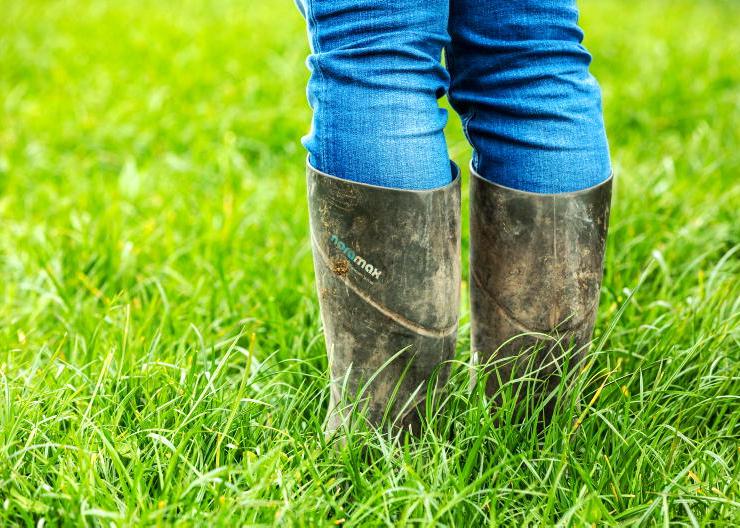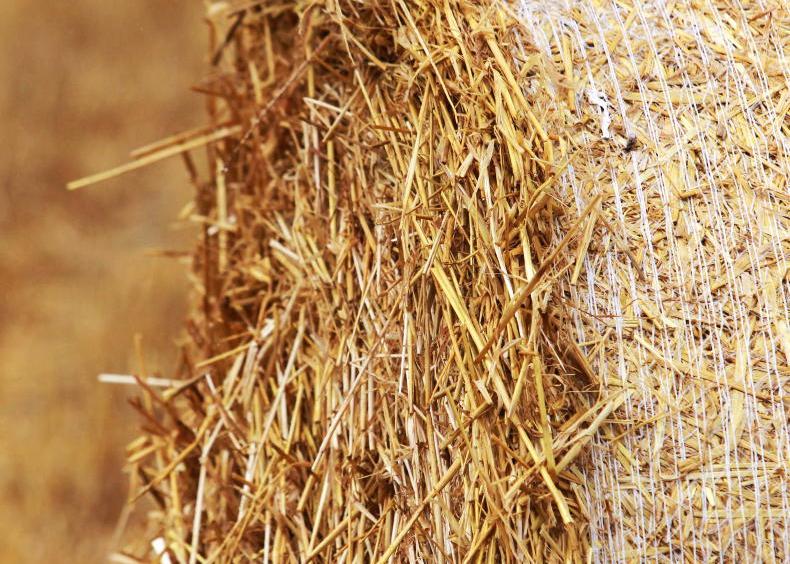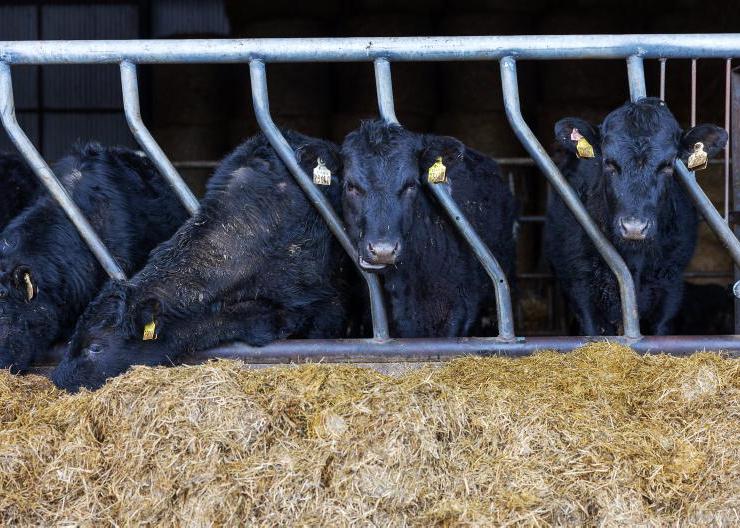When it comes to grassland management, 2024 is shaping up to be a year of missed targets and not much has changed as we progress into late autumn. Looking at the national average figures for last week, the average farm cover (AFC) on dairy farms was 781kg DM/ha whereas the target is 1,100kg DM/ha for most farms. Average farm cover is all of the grass on the farm divided by the number of hectares.
That’s a shortfall of over 300kg DM/ha or 100kg DM per cow, which is worth 12 or 13 grazings per cow in a few weeks’ time. This time last year the average grass growth was 45kg DM/ha/day whereas this year it is down to 41kg DM/ha/day. That 4kg/day difference might not seem like much but it would displace 1.3kg of supplement per cow per day or increase average farm cover by 30kg DM/ha over the space of a week.
Washed out
This time last year was by no means rosy on farms as the country was washed out with extreme rainfall during September. We need to go back to 2021 for the last “normal” grass-growing season. Looking at the data for a Munster-based discussion group, at this time in 2021, the group had an AFC of 1,096kg DM/ha on average and grass growth was 46kg DM/ha/day. Back in 2021 the group were feeding 2kg of meal on average whereas currently, the group is feeding 4kg of meal and 2kg of silage on average.
Grazing conditions
The current grass situation is a real cause for concern because, thinking back to last year many herds were fully housed at the end of October.
Some of this was for ground conditions reasons but others just never got to build up enough grass to sustain extended grazing.
The issue now is that there is less grass on farms today than there was this time last year. Plus, after torrential rain over the last weekend, many farmers in the southwest are grappling with floods and difficult grazing conditions. Here are some options to help maintain your feed levels.
Many farmers in Munster and Leinster have been feeding silage as a supplement due to poor grass growth rates for weeks if not months. Many have already eaten into winter feed reserves and this is dangerous territory for any business.
Farms must have enough silage for the normal winter period, which is typically from early November to mid-March depending on ground type and weather conditions. On top of this, farmers should be including a number of weeks of contingency feed to cater for late springs like 2018 and 2024.
Due to poor grass growth rates many farmers ended up with less silage conserved than they would have liked or needed.
At the most recent Teagasc fodder survey, it was found that almost 20% of dairy farmers have a winter feed deficit of 10% or more with 6%, more than 20% behind target for winter fodder. Therefore, only those farmers that have surplus silage for the winter and a contingency supply should contemplate feeding silage to make up for the difference in grass quantity and supply.
With approximately 30 days of grazing left in the season, farmers should be grazing no more than one-thirtieth of the farm per day. Work out how much grass is available in that section and then adjust demand to ensure the herd is fed.
Feeding straights, such as palm kernel is an option for farmers that are short of grass and winter feed. Although more expensive, it is a better quality feed than silage, particularly where silage is being purchased of dubious quality.

Palm kernel. /Donal OLeary
Palm kernel is not a replacement for concentrates, it’s more so a replacement for silage. It is high in fibre and cows will self-regulate their intakes meaning it can be fed ad-lib.
Many farmers find that the best way of feeding it at this time of year is to tip a load in a central feed passage and let cows eat at it from either side for an hour or two before or after each milking.
Footprint
Palm kernel carries a high environmental footprint as it’s a by-product of the palm oil industry. It is currently selling for between €220 and €250/t so it’s not a cheap feed relative to native barley but it is safer to feed in high quantities.
Selling cull cows will reduce the demand for grass but many farmers are reluctant to sell culls early this year as milk price is high and these cows are milking well.
Another option which is proving popular is to house the cull cows full-time on silage and meal, milk them once a day and then aim to slaughter them in December. This option may not be a runner where silage is scarce.
The only thing that is sacred is the opening average farm cover next spring. All efforts should be made to ensure that this doesn’t deviate from the target, which on most farms will be 900kg to 1,100kg DM/ha in early February.
This will ensure enough grass for early turnout. Picture the benefits of having cows out to grass early next spring capitalising on a high milk price.
In order to achieve this, the farm must be closed at a target cover which for most farmers is 600kg to 800kg DM/ha in early December.
In short
Average farm cover is way behind target on the majority of farms meaning extended grazing will be severely challenged this autumn. High rates of additional supplement are being fed which is eating into winter reserves on many farms. Farmers must do a grass budget and make decisions to ensure the opening average farm cover next spring is on target for early turnout.
When it comes to grassland management, 2024 is shaping up to be a year of missed targets and not much has changed as we progress into late autumn. Looking at the national average figures for last week, the average farm cover (AFC) on dairy farms was 781kg DM/ha whereas the target is 1,100kg DM/ha for most farms. Average farm cover is all of the grass on the farm divided by the number of hectares.
That’s a shortfall of over 300kg DM/ha or 100kg DM per cow, which is worth 12 or 13 grazings per cow in a few weeks’ time. This time last year the average grass growth was 45kg DM/ha/day whereas this year it is down to 41kg DM/ha/day. That 4kg/day difference might not seem like much but it would displace 1.3kg of supplement per cow per day or increase average farm cover by 30kg DM/ha over the space of a week.
Washed out
This time last year was by no means rosy on farms as the country was washed out with extreme rainfall during September. We need to go back to 2021 for the last “normal” grass-growing season. Looking at the data for a Munster-based discussion group, at this time in 2021, the group had an AFC of 1,096kg DM/ha on average and grass growth was 46kg DM/ha/day. Back in 2021 the group were feeding 2kg of meal on average whereas currently, the group is feeding 4kg of meal and 2kg of silage on average.
Grazing conditions
The current grass situation is a real cause for concern because, thinking back to last year many herds were fully housed at the end of October.
Some of this was for ground conditions reasons but others just never got to build up enough grass to sustain extended grazing.
The issue now is that there is less grass on farms today than there was this time last year. Plus, after torrential rain over the last weekend, many farmers in the southwest are grappling with floods and difficult grazing conditions. Here are some options to help maintain your feed levels.
Many farmers in Munster and Leinster have been feeding silage as a supplement due to poor grass growth rates for weeks if not months. Many have already eaten into winter feed reserves and this is dangerous territory for any business.
Farms must have enough silage for the normal winter period, which is typically from early November to mid-March depending on ground type and weather conditions. On top of this, farmers should be including a number of weeks of contingency feed to cater for late springs like 2018 and 2024.
Due to poor grass growth rates many farmers ended up with less silage conserved than they would have liked or needed.
At the most recent Teagasc fodder survey, it was found that almost 20% of dairy farmers have a winter feed deficit of 10% or more with 6%, more than 20% behind target for winter fodder. Therefore, only those farmers that have surplus silage for the winter and a contingency supply should contemplate feeding silage to make up for the difference in grass quantity and supply.
With approximately 30 days of grazing left in the season, farmers should be grazing no more than one-thirtieth of the farm per day. Work out how much grass is available in that section and then adjust demand to ensure the herd is fed.
Feeding straights, such as palm kernel is an option for farmers that are short of grass and winter feed. Although more expensive, it is a better quality feed than silage, particularly where silage is being purchased of dubious quality.

Palm kernel. /Donal OLeary
Palm kernel is not a replacement for concentrates, it’s more so a replacement for silage. It is high in fibre and cows will self-regulate their intakes meaning it can be fed ad-lib.
Many farmers find that the best way of feeding it at this time of year is to tip a load in a central feed passage and let cows eat at it from either side for an hour or two before or after each milking.
Footprint
Palm kernel carries a high environmental footprint as it’s a by-product of the palm oil industry. It is currently selling for between €220 and €250/t so it’s not a cheap feed relative to native barley but it is safer to feed in high quantities.
Selling cull cows will reduce the demand for grass but many farmers are reluctant to sell culls early this year as milk price is high and these cows are milking well.
Another option which is proving popular is to house the cull cows full-time on silage and meal, milk them once a day and then aim to slaughter them in December. This option may not be a runner where silage is scarce.
The only thing that is sacred is the opening average farm cover next spring. All efforts should be made to ensure that this doesn’t deviate from the target, which on most farms will be 900kg to 1,100kg DM/ha in early February.
This will ensure enough grass for early turnout. Picture the benefits of having cows out to grass early next spring capitalising on a high milk price.
In order to achieve this, the farm must be closed at a target cover which for most farmers is 600kg to 800kg DM/ha in early December.
In short
Average farm cover is way behind target on the majority of farms meaning extended grazing will be severely challenged this autumn. High rates of additional supplement are being fed which is eating into winter reserves on many farms. Farmers must do a grass budget and make decisions to ensure the opening average farm cover next spring is on target for early turnout. 










SHARING OPTIONS